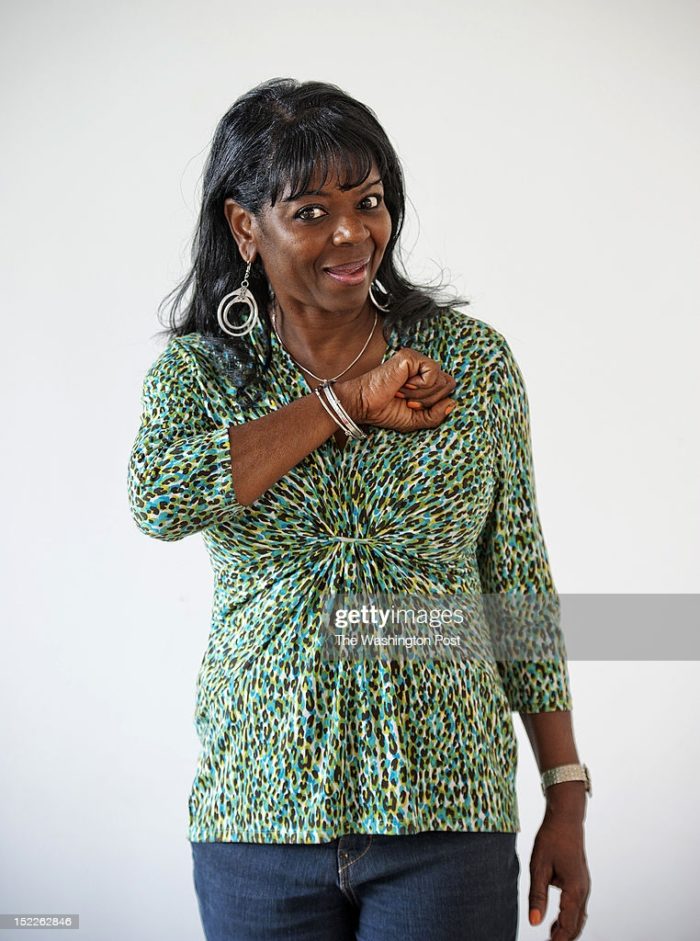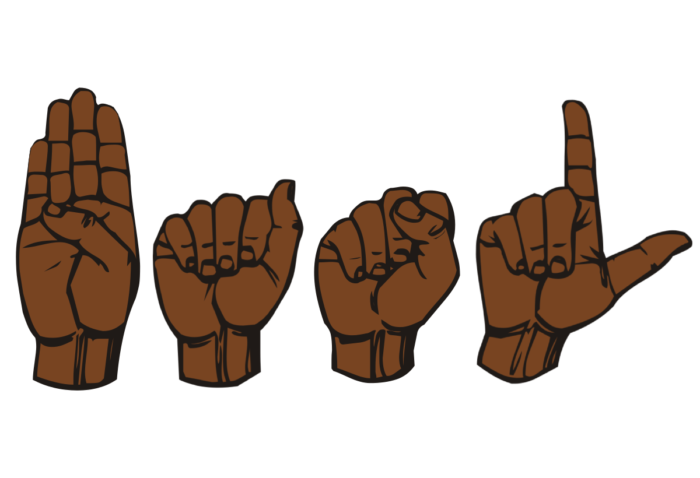By Nicole Manning
Over this past year, the focus on the Black Lives Matter movement and greater respect for African American culture worldwide has revealed the intersection between racial prejudice and many other kind of social discrimination. Citizens who are blind, deaf, or wheelchair-bound have also had to struggle for equal rights, and if they also happen to belong to the black community, often do so while sustaining distinctively black cultural reactions to the plight of being “differently-abled.”
Black deaf men and women have contributed a unique form of speech to both deaf and Black American culture, a type of communication called Black American Sign Language (BASL). The history of segregation in U.S. hospitals and schools led to the creation Black American Sign Language, due in part to the exclusion of Black deaf students from early schools established for white deaf children. The same way spoken Black slang and folk expressions developed largely in response to forced isolation from a white mainstream, BASL emerged from a black deaf subculture impacted by social isolation. Because many black members of America’s deaf minority were historically not easily accepted into either the deaf community or the black community distinctive strategies and learning institutions arose in which they, and their creativity, thrived. Nevertheless, BASL itself has been disparaged or oppressed by those who favor a standardized American Sign Language which would erase ethnic differences in how deaf black oeople communicate. Author and educator Dr.Carolyn McCaskill and many young Black signers advocate to preserve Black American Sign Language and keep this culture alive.
The first American School for the deaf opened on April 15, 1817, in Hartford, Connecticut; however, young African American children were not allowed to attend. The first school for African American deaf students was not created until 1869 in North Carolina. So African Americans had to create their own way to communicate, as well as forming a whole new community, solidified by having words and gestures in common. As many deaf African Americans even today will say: “… it’s our language. It’s our gestures, it’s our vibes. It’s how we communicate, how we are able to talk.” (Phillips & Yang). There are many differences between American Sign Language(ASL) and BASL. In Black ASL, people tend to use two hands, their signs are more repetitive, and they have a larger signing space.
With Black American Sign Language, although the goal of communication and understanding makes it similar to ASL, there are a few variations in linguistics and patterns. According to an article by The Washington Post, “About 11 million Americans consider themselves deaf or hard of hearing, according to the Census Bureau’s 2011 American Community Survey, and Black people make up nearly 8 percent of that population” (Waller). This percentage proves it is even more important to preserve Black ASL. Furthermore, Dr. Carolyn McCaskill was the first to take a step in that direction.

Gallaudet professor Carolyn McCaskill demonstrates differences in ASL between black and white users. Pictured, professor McCaskill signs “my bad”. (Photo by Bill O’Leary/The Washington Post)
Today Dr. McCaskill is a professor at Gallaudet University, teaching deaf studies to both black and white students. She is currently working with students and colleagues to preserve the culture of the Black American Sign Language. McCaskill experienced many barriers as a black deaf woman growing up in the sixties, not just experiencing racism but also sexism and discrimination against deafness. Dr. McCaskill had to attend the Alabama School for Negro Deaf and Blind. There were not many options available to her and her family. However, when she was finally allowed to go to an integrated school, formal American Sign Language was a whole new world to her. Her connection to Black ASL was often shamed and put to the side. Because, as McCaskill has said, she and many of her black peers were taught that, “White is right”— she was compelled to learn the “white way” to sign. “I learned how to sign that way,” she told interviewers, “and I actually put to the side the way I knew how to communicate, to sign” (Phillips & Yang).
While knowing Black ASL as well as ASL allowed one to be a part of two communities and opened one up to more opportunities. It also made one feel that they were separating themselves from their culture and roots. Eventually McCaskill started working with other researchers to create the publication “The Hidden Treasure of Black ASL.” This book brings to life a rich culture representing the struggle and strength that black deaf men and women historically went through, not just during segregation but even today. McCaskill’s work emphasized that Black American Sign Language is a vital part of the diversity and culture of the deaf community, and not some lower class slang in relation to American Sign Language. As society continues to get more politically sophisticated and hi-tech, younger generations are starting to take part in this movement.
Younger generations have started using social media and video platforms, such as TikTok and YouTube, to get their voices heard and expose people to Black ASL. Nakia Smith is a young girl who created an account last April to emphasize that “…History is important,” as she says in one video. “Am I trying to divide the language between ASL and BASL? No. I just carried the history.” (Waller). Smith is just one of the many elevating a Black American Sign Language platform to share the same spotlight enjoyed by ASL. Many YouTubers and discussion panelists are finding new ways to educate their communities about Black ASL and how to preserve this culture. Last year, Signing in Black America, and Deaf U, were two documentaries where black deaf women and men shared their stories and journeys and highlighted the successes and challenges they faced as deaf people in America. This is just the first step in preserving the history and culture of Black American Sign Language.
What Carolyn McCaskill and a growing number of ambitious teens are doing to preserve Black ASL and deaf African American history is an important addition to what has already been done to bring African American history to worldwide attention. Black American Sign Language is not just about communication and understanding. It is a unifying foundation for deaf African American communities that are just trying to be respected and embraced by the mainstream. It is a way to prove to people who discriminate based on their skin color and disability that they have the same potential, drive, and purpose as anyone else.
Work Cited Page
- https://www.nad.org/2020/08/03/nad-sues-white-house/
- https://www.nytimes.com/2021/01/23/us/black-american-sign-language-tiktok.html
- https://www.washingtonpost.com/lifestyle/style/sign-language-that-african-americans-use-is-different-from-that-of-whites/2012/09/17/2e897628-bbe2-11e1-8867-ecf6cb7935ef_story.html
- https://dcmp.org/learn/366-black-deaf-culture-through-the-lens-of-black-deaf-history
- https://www.aclib.us/waldo/blog/black-american-sign-language
- https://www.signlanguagecenter.com/slc-events/black-asl-with-dr-carolyn-mccaskill
- https://www.dclibrary.org/node/67316
